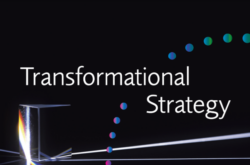Using Space Effectively
Using Space Effectively
The physical atmosphere for facilitated events is as crucial as using sound facilitation methods and techniques.
Ensuring an Appropriate Space
First, the space needs to be appropriate for the event. A small space, for example, might make participants feel cramped and uneasy, while a large space can make people feel their effort is insignificant. Use room dividers, plants and furniture in a large room to delimit the actual meeting area to fit the size of a group. Seeing the space in advance allows the facilitator to prevent space problems, ensure adequate space for working groups and to check that projectors, VCRs or other equipment actually works.
The facilitated group is trying to accomplish something. Space can contribute in many ways. For example, lighting and acoustics need to be appropriate for the kind of work the group will do. Concert stage lighting is likely to blind the participants in a meeting. Likewise, too subdued lighting will not allow the group to see their data up front.
If the facilitator wants a serious atmosphere focused for work, shifts in wall décor and furnishings may be necessary. Artforms that irritate or distract may have to be temporarily taken down – always with permission.
Setting the Space with Intentionality
Participation is about face-to-face dialogue amongst the people in the group. For the most part, discussions and workshops work best when the group sits at squared-off tables and chairs – a modified UN style. This can be used with large and small groups, provides maximum eye contact, and allows people to be close enough to hear each other without raising voices. Since the group focuses on the group, not the leader, the space arrangement needs to symbolize the unity of the group. Needless to say, podiums and platforms create an atmosphere not conducive to participation, while squared-off tables minimize vulnerability and say that serious work is going to happen here. Chairs need to be comfortable enough that people’s energy is used on the task at hand. A little padding goes a long way.
Space should be well-cared for and arranged. Use relevant wall decor to enhance the atmosphere; place it at eye level for maximum impact. Everything about a room should communicate that the participants are valuable, welcome and important. People work best when they feel honoured and can focus on the task. Sloppy, unkempt space communicates unseriousness and disrespect for the participants.
Set up the room before participants arrive. Imaging the kind of table setting that goes on in a fine restaurant. Arrange materials at each place flush with the edge of the table. Everything in the set-up communicates care and intentionality. Set up tables with precision. Align chairs along each side of the square. Care for the space during breaks so it helps rather than hinders the work throughout the event.
Keeping the Group’s Data Visible
Facilitators enable people to dialogue over ideas. When you write ideas and put them up in front of the whole group they become the property and focus of the whole group because they are answers to a common question. Ideas need to be written on cards or flip charts large enough for everyone to see.
You need a wall large enough to receive the group’s data, and flip charts placed strategically so everyone can see them. A clear and visible summary of small group work on a flip-chart page helps people participate. Things stuck to a wall actually need to stick. Putty adhesive works best. It is good practice to check with those in charge about putting things on the walls.
Finally, after the event, the good facilitator makes sure everything is put back where it was before the session, and the room is ready for its next use.
Wayne Nelson
Copyright Edges Magazine, 1996.
Reprinted by permission





